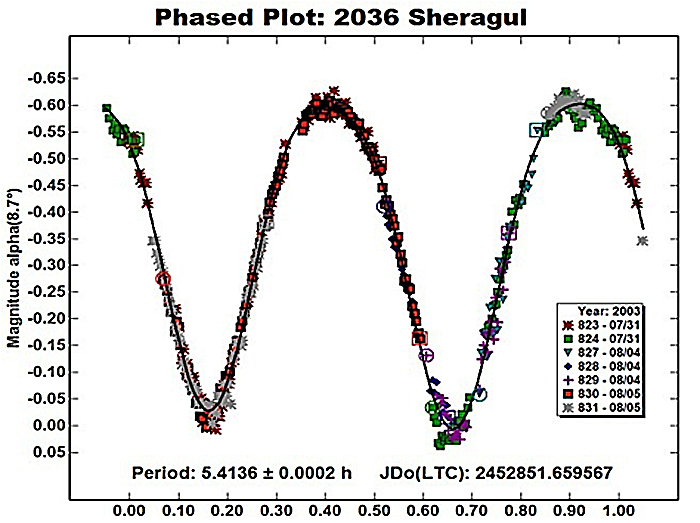
2003 lightcurve results for 2036 Sheragul. Derived period 5.4136 ± 0.0002 hours. Amplitude 0.60 ± 0.01 magnitude.
2036 Sheragul is a main belt asteroid with an estimated diameter of about 15 km. It was discovered on September 22, 1973 by N. Chernykh at Nauchnyj. The semi-major axis is 2.23 AU, the eccentricity is 0.186 and the inclination is 3.97 degrees.
I first observed this asteroid on three nights between July and August 2003. The resulting lightcurve showed a period of about 5.4136 hours.

Further observations were made on three nights during October and November 2010. This data resulted in a very good lightcurve with a period of about 5.4132 hours, confirming the 2005 result.
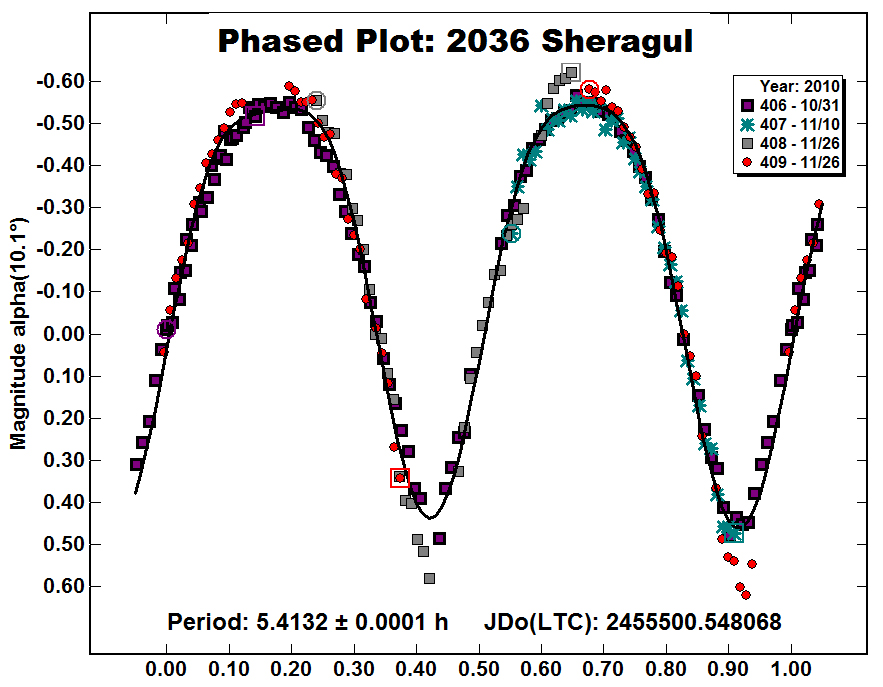
A third set of observations were made on three nights during January 2012. The resulting lightcurve again confirmed the earlier results, with a period of about 5.4120 hours.
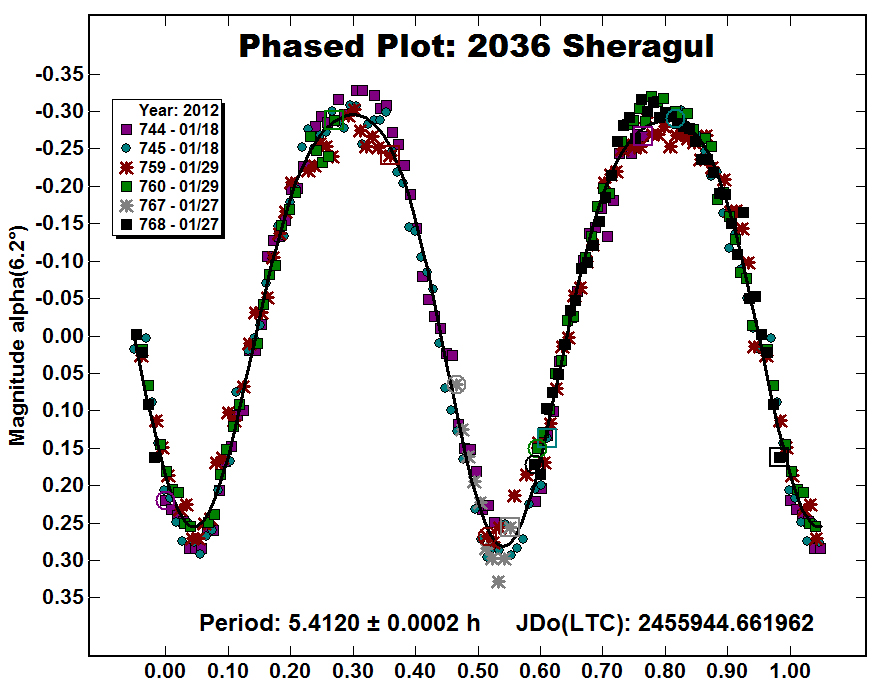
The main reason for observing the asteroid three times was to use the extra data to model the asteroid's shape. I had hoped that by using data from 3 oppositions, I would be able to constrain to model. The results did not bare out this hope, with the results being poorly constrained. The results of this work were presented at the 2012 SAS workshop and conference.
The first step in the shape model analysis was to use the lightcurve data to derive a sidereal period, which was then applied in a pole search that generated a “map” of possible pole solutions. This is shown below.
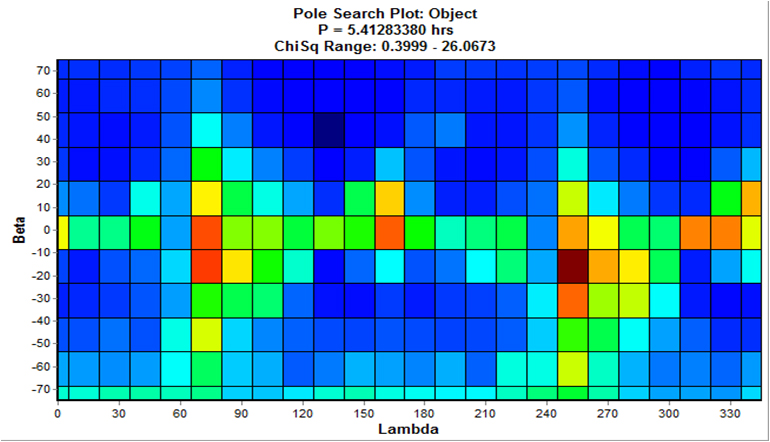
These results were then refined by running the search again using one of the two solutions as a starting point and allowing the longitude and latitude of the pole as well as the sidereal period to float. The final result showed two possible solutions. One at lambda = 134 degrees, beta = +38 degrees, period = 5.41283557h, and the second at lambda = 314 degrees, beta = -46 degrees, period = 5.41282858h. The resulting models are shown below.
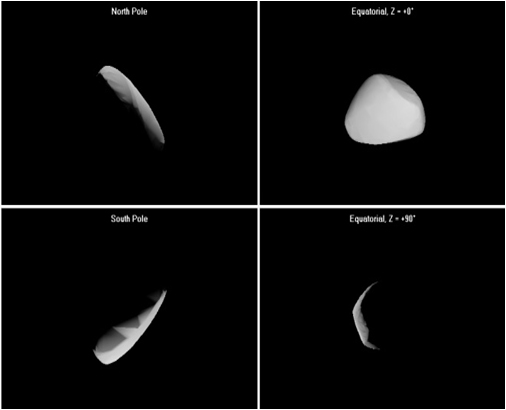
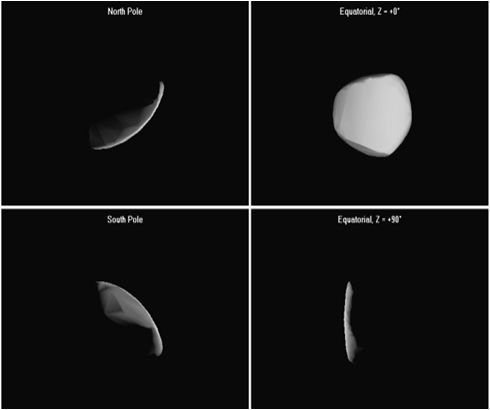
Neither of the 2 possible solutions is to be preferred over the other. The results are too ambigious. More observations are planned for future oppositions to try to refine this model.